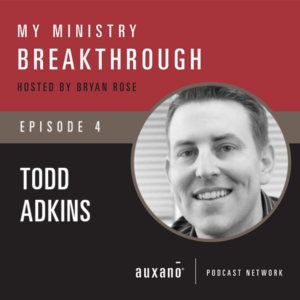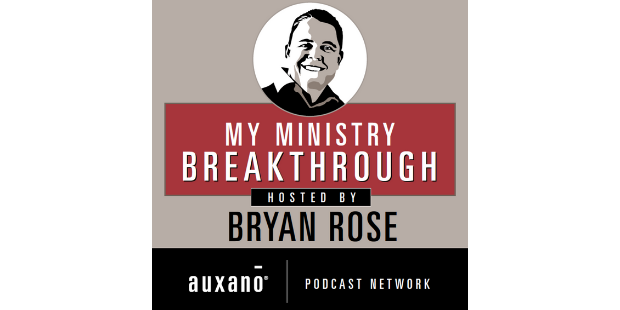
5 Ways to Avoid Panic When Asked to Speak at a Moment’s Notice
It freaks everyone out, but at some point or another, you’re going to be called to give an impromptu talk.
Maybe it will be in front of eight people in the boardroom after the boss taps you on the shoulder and says “What do you have to say about that? Get up and tell us!”
Or maybe you’re speaking at an event and you learn the keynote speaker’s flight was canceled, and they call on you at the last minute.
Or maybe you feel like the talk you prepared isn’t the right one, and you need to take things in a whole new direction, and you’re up in five minutes.
As a full time communicator, I’ve been there…in almost every scenario you can think of.
In any scenario, cue most leader’s worst nightmare: giving a talk with zero prep time. How do you not just panic, throw up, freeze like a deer in the headlights or ramble on like someone who had their brain removed?
HERE’S HOW IT CAN HAPPEN TO YOU
I was twelve years old when I gave my first impromptu talk. I was supposed to give a five-minute talk to our church family about the camp I’d been to that summer. Someone else was cued up to speak ahead of me, and she basically said exactly what I was going to say.
So what did that twelve-year-old kid do? According to my dad, I walked on stage, made up a bunch of new points, and no one knew the difference.
What started at 12 has happened more times than I can count since.
Here are three quick examples:
Numerous times at events, I’ve watched the previous speaker cover points I was going to make. At that moment I know I have to pivot, and I’m up next. Apparently, this doesn’t only happen to 12-year-olds.
Earlier this year I was at a conference when I learned the night before that the keynote couldn’t make it. I got asked to step in…in front of 3000 people.
A few years ago at our church, we were in a video series with Andy Stanley and the video playback died. Just died. Right in the middle of the service. I’d heard the message at the previous service, but with literally 30 seconds notice, I got pushed onto the stage. The lights came up. I explained to the congregation that the video had died so I was up with zero prep, having heard the message once before. Then I proceeded to do the best I could to recite what I remembered from Andy’s message and improvised my own take. After the 40-minute message was over, people cheered.
How do you carry yourself in moments like those?
Look, I have a huge preference for writing messages months and weeks ahead of delivery, and highly recommend that.
I outline an entire process for delivering amazing sermons and talks in my new course, The Art of Better Preaching. So 99.9% of the time, go with that.
But at some point, with zero prep, you’re going to be pushed onto a platform to speak.
Then what?
How do you simply not freeze or stumble all over your words, or just meander your way to disaster?
Here are 5 ways to handle that moment when it comes.
1. DON’T PANIC
The biggest enemy you have when you’re called on at the last moment and you panic is you.
Your emotions will threaten to hijack your brain. You’ll convince yourself that you’re not able to do a good job, that this is unfair, that you haven’t got it in you to rise to the occasion.
Start believing that, and the voices in your head will be 100% accurate.
Except they’re not. You can do a good job. And no, it’s not unfair (people want to hear from you) and you’ve got this.
The best way to deal with your natural fear is to push past it. So push past it.
After all, this is happening, and you’re more ready than you think.
2. THINK ABOUT WHAT YOUR AUDIENCE NEEDS
So where do you start?
Left unchecked, you’ll only think about you. (You’ll invent 100 new insecurities on the spot. See #1 above.)
So, shift your view for a moment and think about what your audience needs.
Who’s the room?
What are their issues?
What do you possess that might help them?
How can you empathize with what they’re going through?
Speakers who care about their audience will always have a more engaged audience.
3. FOCUS ON WHAT YOU ALREADY KNOW
Great…so you’ve thought (even momentarily) about your audience and tried to silence the panic in your head and heart.
Now what?
Your mind might naturally want to focus on what you don’t know. After all, you couldn’t prepare. No research. No carefully crafted phrases. Zero prep.
Your head will go back to this: clearly, I can’t tackle this.
Not true.
You’ve got a few decades of life under your belt, and you know something.
Focus on that.
For professional communicators (preachers, leaders), you’ve likely got a few talks under your belt that you can cherry pick from. Do it.
Pull from that sermon you preached last September or that talk you gave in June. It’s not unfair. And it’s not cheating. It’s called serving your audience well.
And if you go with what you know, you’ll be coherent.
A coherent you is better than a rambling you.
Even if you’re not in the habit of speaking, you know a lot about some things. Draw on that knowledge.
When you panic, you’ll be tempted to focus on what you don’t know. Focus on what you know instead.
You know way more than you think.
4. PRETEND YOU’RE HAVING A CONVERSATION…BECAUSE YOU ARE
In all impromptu talks, here’s a principle that simply works: pretend you’re having a conversation. Because you are.
Why does imagining you’re having a conversation work?
Because you do it every day. Think about it.
How much time do you prepare for the conversations you have every day? For the most part, unless you’re asking for a raise or having a tough intervention, the answer is “Well, I don’t.”
Exactly.
That’s the thing about conversations….you just have them.
So go have one.
Pretend you’re talking to one person and just explaining your thoughts, ideas and feelings.
You’ll be amazed at how easy it is.
A conversation has a natural flow. Go with that flow. Your accumulated lifetime experience of interacting with other people will move you toward forming an introduction, a main point (or points) and an ending.
The pressure of speaking in front of a live audience will help you stay focused, sharp and concise.
So…you have conversations all the time that you never prepare for. And you’re fine in them.
This time, a bunch of people just happened to show up.
5. FINISH EARLY (IT’S OKAY…REALLY)
Of all the things communicators struggle with, this is one of the worst: we convince ourselves we don’t have enough to say to fill the time.
First, that’s almost never true. Most speakers and preachers go over time, every time. Cue the buzzer for that habit.
Second, the audience is almost always grateful when a speaker finishes on time and extra grateful when the speaker wraps up early.
If you run out of things to stay (and you might), stop. Even if you’re done early.
Worried you’re disappointing your host? Just say “It’s been a joy to share this impromptu moment with you, I think that’s all I have to say. Thank you.”
Cue the thunderous silent applause going on in every audience member’s head.
People are incredibly grateful when communicators realize they’re done.
A communicator who knows they’re done before the audience senses they’re done is a wise communicator.
So that’s it. A five-step strategy to help you nail an impromptu talk, or at least not blow it.
What are some other things you’ve learned that help you give a decent impromptu talk?

Tags: Carey Nieuwhof, Impromptu Talks, Off the cuff remarks, Spur of the moment talks































